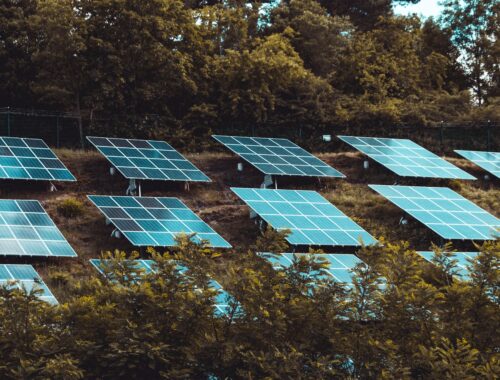
Solar Power and the Future of Energy: Trends and Forecasts
The future of energy is undergoing a transformative shift, and at the forefront of this change is solar power. As the world grapples with the urgent need to transition to sustainable and renewable energy sources, solar power has emerged as a key player in shaping the future of energy generation, distribution, and consumption. In this article, we will delve into the trends and forecasts that highlight the pivotal role of solar power in shaping the energy landscape of tomorrow.
Rapid Growth and Falling Costs:
One of the most remarkable trends in the solar power industry is the rapid growth of solar installations worldwide. Solar capacity has been expanding at an unprecedented rate, with cumulative installations exceeding hundreds of gigawatts globally. This growth is fueled by falling costs of solar technology, including solar panels and associated components. Advances in manufacturing processes, increased economies of scale, and technological innovations have significantly reduced the cost of solar power, making it increasingly competitive with traditional fossil fuels.
Decentralization and Distributed Energy Resources:
Solar power is driving the trend toward decentralization in energy systems. Traditionally, energy generation has been centralized in large power plants, requiring extensive transmission and distribution infrastructure. Solar power, however, enables distributed energy resources, where energy is produced closer to the point of consumption. Rooftop solar installations, community solar projects, and microgrids are examples of this decentralized approach. As more individuals and businesses generate their own electricity, the energy landscape becomes more resilient and adaptable.
Technological Advancements:
Advancements in solar technology continue to redefine the efficiency, durability, and aesthetics of solar panels. The development of higher-efficiency solar cells, such as PERC (Passivated Emitter Rear Cell) and bifacial cells, allows for greater energy capture from the same amount of sunlight. Moreover, innovations in materials, coatings, and manufacturing techniques are enhancing the longevity and performance of solar panels. Emerging technologies like transparent solar panels and solar-integrated building materials are also shaping the integration of solar power into various aspects of daily life.
Energy Storage Integration:
The integration of energy storage solutions with solar power systems is a critical trend shaping the future of energy. Energy storage addresses the intermittent nature of solar power by storing excess energy generated during the day for use during periods of low sunlight or high demand. Advancements in battery technology, including lithium-ion batteries and emerging chemistries, are making energy storage systems more efficient, cost-effective, and scalable. The synergy between solar power and energy storage enhances grid stability, enables off-grid applications, and promotes grid independence.
Electrification and Solar-Powered Transportation:
Solar power is poised to play a significant role in the electrification of transportation. Electric vehicles (EVs) are becoming increasingly popular, and solar-powered EV charging stations are emerging as a sustainable solution for charging these vehicles. Solar panels integrated into vehicles, such as solar roofs and solar panels on the hoods, can directly contribute to charging EV batteries and extending their range. This integration supports a circular energy system, where solar power generates electricity for transportation and returns excess energy to the grid.
Grid Modernization and Smart Technologies:
Solar power is driving the modernization of electrical grids through the integration of smart technologies. Smart inverters, meters, and energy management systems enable real-time monitoring and control of solar power systems. These technologies facilitate grid stability, demand response, and the efficient utilization of solar energy. Moreover, blockchain technology is being explored to enable peer-to-peer energy trading and create decentralized energy markets, further democratizing the energy landscape.
Policy and Regulatory Support:
Government policies and regulations are crucial in shaping the future of solar power. Supportive policies, such as tax incentives, feed-in tariffs, and renewable portfolio standards, drive investment in solar installations. Net metering policies and favorable regulations for grid interconnection encourage solar adoption by ensuring fair compensation for surplus energy. As countries set ambitious renewable energy targets and carbon reduction goals, solar power will play a central role in meeting these objectives.
Energy Transition and Sustainability Goals:
Solar power is a linchpin in the global transition to sustainable and renewable energy sources. Many countries and corporations are committing to ambitious sustainability goals, including achieving net-zero emissions and carbon neutrality. Solar power’s ability to provide clean and abundant energy aligns with these goals and supports efforts to mitigate the impacts of climate change.
Energy Access and Developing Countries:
Solar power is addressing energy access challenges in developing countries by providing an affordable and reliable source of electricity. Off-grid solar solutions, including solar lanterns and microgrids, are improving the lives of millions by enabling access to lighting, communication, and essential services. As solar technology becomes more affordable and adaptable, its impact on energy poverty and socio-economic development will continue to grow.
Solar power is steering the future of energy toward sustainability, decentralization, and technological innovation. The trends discussed above underscore the significant role solar power plays in reshaping the energy landscape. As solar technology continues to advance, costs decline, and renewable energy policies expand, solar power will continue to drive the global transition to a more sustainable, resilient, and equitable energy future.
You May Also Like

How much solar energy can a single panel produce?
April 21, 2023
Solar Power in Developing Countries: Promoting Energy Access
June 15, 2023

